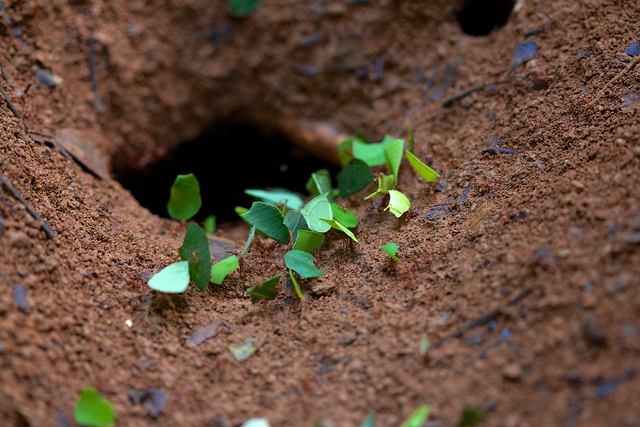Cut ants, red ants, town ants, parasol ants – these are all names people give the spiny leafcutter ant. Gardeners all over the state have likely encountered these insects because it turns out leafcutter ants are actually gardeners themselves. Wizzie Brown, an insect specialist with the Texas A&M AgriLife Extension Office, says that while you likely won’t be able to get rid of them entirely, you can keep them from taking over.
What are leafcutter ants actually doing to my plants?
“These are ants that will strip foliage off of various plants and they take it down into the ground and they feed it to this fungus garden that they have. And so the fungus garden breaks down the plant foliage and then the ants will eat the fungus – so they’re gardening… They can strip a landscape overnight. These colonies can be very huge – millions of ants – very extensive in tunneling systems and that sort of thing.”
What can I do if I catch them in my yard? How do I tell them apart from fire ants?
“The good news is you can knock back their population. The bad news is I have never heard of anybody getting rid of them. Basically, there is a bait product that you can broadcast with a handheld spreader around the mound areas – these do make mounds. Sometimes they’re mistaken for fire ant mounds but these have a central opening and they also have kind of a crater shape like a divot where the opening is.”
I see leafcutter ants but not their mounds – what gives?
“I have seen them tunnel underneath [the] road and pop up across the street because the foliage was better over there – then you’ll just have trails and holes and stuff. If that’s the case you can use a residual spray or dust that’s just labelled for ants along those trail areas and you can knock back the population that way. But it will gradually come back and you would need to treat again.”
















